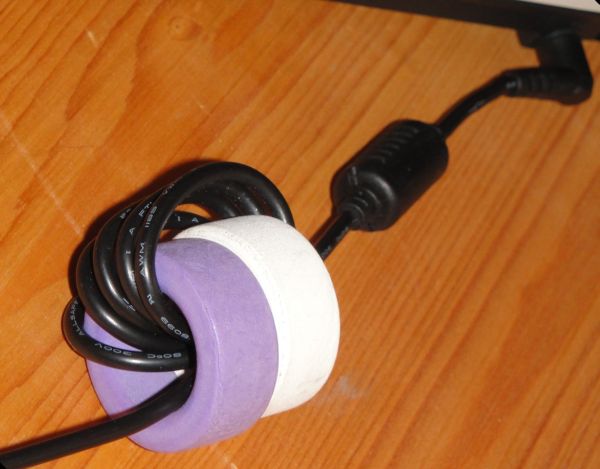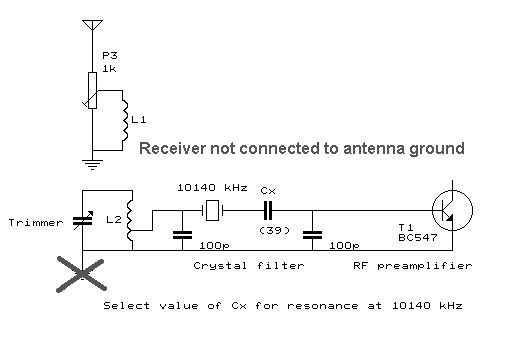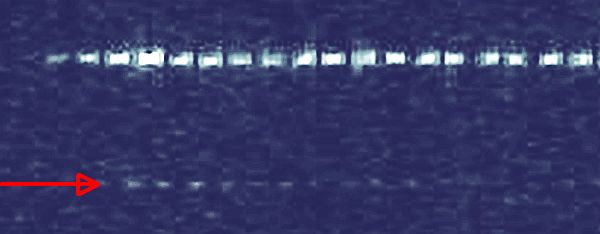EXPERIMENTS WITH A 100 MICROWATT
SIGNAL IN THE 30 METER BAND
(2011)
KLIK HIER VOOR DE NEDERLANDSE VERSIE
Experiments with a 100 microwatt QRSS beacon transmitter
I had already tried once to build a beacon transmitter of only 10 milliwatt and to receive it during my holidays in Spain. It seems impossible and in the past when we could only receive CW by ear, that was indeed impossible. Low QRP power of 1 watt is already 100x lower than the 100 watt that a normal amateur is using. And those 10 milliwatt are again a factor 100x lower, so 10000x lower than the usual 100 watt! Compared to this power, my small 1 watt QRP transceiver is a high power QRO transmitter!
It was possible to receive the signal and even much more often than I had expected. Even a signal of 1 milliwatt could be received quite often. But a signal of 100 microwatt or 1 million times lower than the usual 100 watt? That had to be tried. With the in Python written program LOPORA for the reception of QRSS beacons and the improved receiver with crystal filter.

Ferrite ring cores in the supply cable and the same ring cores in
the audio cable to suppress radio interference from the laptop.

And the antenna ground is not connected to the grounding of the receiver anymore.
So L1 is completely isolated from the receiver and L2.
Improvements of the receiver and modification of the transmitter
The improved receiver with crystal filter was taken. The laptop dit generate quite a lot of radio noise interference. A few ferrite ring cores in the audio cable and supply cable did suppress this interference quite well. And the antenna ground and L1 were completely isolated from the receiver. But suppression of the PC interference can still be improved. And the transmitter was modified so that it transmits a square wave with a shift of 4 Hz and transmit times of 20 seconds per shift. During the high shift the transmit power is 10 milliwatt, during the low shift only 100 microwatt. As the high shift is transmitted with much more power, the signal can easily be found in the radio spectrum. And the stability was improved by taking a new 10140 kHz crystal, so that the coil in series with the crystal was not necessary anymore. And the temperature compensation was adjusted more accurate. During the experiment of a few days, the drift between transmitter and receiver was only 4 Hz!
So now and then, the 100 microwatt signal was just visible at a distance of 1650 kilometer!

The 10 mW beacon signal, with 4 Hz lower next to the arrow
a weak trace of the 100 microwatt signal.

The 10 mW beacon signal, with 4 Hz lower next to the arrow
a weak trace of the 100 microwatt signal.

The 10 mW beacon signal, with 4 Hz lower next to the arrow
a weak trace of the 100 microwatt signal.

And here 6 pictures mean stacked with the program RotAndStack.
(http://www.gdargaud.net/Hack/RotAndStack.html)
As you can see here above, it was indeed possible to receive a very weak trace of the 100 microwatt signal at a distance of 1650 kilometer! Incredibly! The vertical short transmitting antenna is not so good, the central heating is used as a ground. And that bad antenna is behind the roof with insulation plates with metal foil. And in Spain, a mountain was located in the direction of the Netherlands. However, after a 2100 kilometers long drive of 2 days we were still within the range of the 10 milliwatt beacon transmitter and so now and then, even a very weak trace of the 100 microwatt signal was visible! But of course, everything has to go well and it was only very rarely that something was visible of the 100 microwatt signal.
Links to the description of the QRSS beacon receiver:
BACK TO THE INDEX PA2OHH






